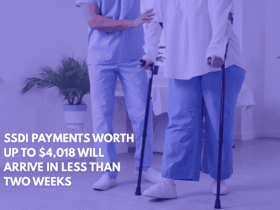Millions of Social Security recipients in the United States are preparing to receive a new round of payments on Wednesday, April 9, 2025. This payment will reflect the 2.5% increase from the Cost of Living Adjustment (COLA) that was implemented in January 2025. If you’re a retiree, this adjustment will help you cope with rising inflation and living expenses.
The good news is that no action is required on your part—just check your payment, and you’ll see the adjustment reflected in your check.
Who Will Get the Payment on April 9, 2025?
The Social Security Administration (SSA) pays benefits on specific days depending on your birth date and retirement age. On April 9, 2025, the following group of retirees will receive their payments:
- Born between the 1st and 10th of any month
- Started receiving Social Security benefits at age 62
If you fit into this category, expect to receive your updated payment on April 9.
How Much Will the Social Security Payment Be in April 2025?
The exact amount of Social Security payments depends on several factors, including your lifetime earnings and the age at which you retired. For those who retired at age 62, the maximum monthly payment in 2025 is $2,831.

However, if you delayed your retirement until full retirement age (which is 67 for those born in 1960 or later), your monthly payment could be as high as $3,822. If you wait until age 70, you can receive the maximum Social Security payment of $5,108.
This tiered benefit system is designed to ensure the long-term sustainability of the Social Security program while encouraging retirees to wait as long as possible to claim benefits, which helps the system stay strong.
Social Security Updates in 2025
Aside from the 2.5% COLA increase, 2025 brings important changes to the Social Security system:
1. Increased Taxable Earnings Limit
The taxable earnings limit has been raised to $176,100 for 2025. This change will affect higher-income individuals who continue to pay into the system.
2. Gradual Increase in Full Retirement Age
The full retirement age is gradually increasing, which means that younger generations may need to work longer before receiving full benefits. These changes reflect the program’s strategic response to demographic and economic shifts and are meant to strengthen the program’s stability for future generations.











Leave a Reply